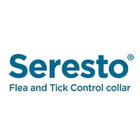
Introduction
Cats are known for their soft, glossy fur that keeps them warm and adds to their charm. But have you ever wondered what lies beneath all that fur? A hair follicle is at the root of every strand—a small but powerful structure that plays a vital role in your cat’s skin health, coat condition, and overall well-being. In this blog, we’ll explore what hair follicles are, how they function in cats, and what problems can occur if they’re unhealthy.
What Are Hair Follicles?
Hair follicles are tiny, tube-like structures located within the skin. Each follicle produces a single strand of hair connected to sebaceous (oil) glands and minor muscles. These structures are more than just hair factories—they’re complex components of your cat’s skin ecosystem.
Why Are Hair Follicles Important?
Hair follicles in cats serve several purposes:
- Thermal regulation: Fur helps maintain body temperature by trapping air and providing insulation.
- Protection: Hair protects skin from harmful UV rays, dust, and minor injuries.
- Sensory function: Some hairs, like whiskers, are deeply connected to nerve endings and help cats sense their environment.
- Skin health: Hair follicles support the skin’s natural barrier and regulate oil production and hydration.
Types of Hair in Cats
Cats have different types of hair, each emerging from specific follicles:
- Guard hairs: The outer, coarser hairs that give the coat its color and pattern.
- Awn hairs: The intermediate layer that offers additional insulation.
- Down hairs: Soft, fluffy hairs closest to the skin provide warmth.
- Whiskers (Vibrissae): Specialized, thick hairs for navigation and sensing vibrations.
Common Hair Follicle Issues in Cats
When hair follicles are healthy, your cat’s coat will look shiny and smooth. However, various issues can affect these structures:
1. Folliculitis
Folliculitis is an inflammation of the hair follicles caused by bacteria, yeast, or fungi. It can lead to red bumps, scabs, and hair loss.
Symptoms:
- Itchy or irritated skin
- Red spots or pimples
- Patchy fur or bald areas
2. Allergic Reactions
Cats may develop allergic reactions to food, environmental triggers, or flea bites, leading to inflamed follicles.
Common triggers:
- Dust mites
- Flea saliva
- Certain proteins in food
3. Mange or Mite Infestations
Parasitic mites like Demodex or Notoedres burrow into the skin and affect the hair follicles, causing intense itching and bald spots.
4. Hormonal Imbalances
Hormonal disorders such as hypothyroidism or Cushing’s syndrome can interfere with the natural hair growth process and lead to weakened hair follicles.
5. Stress or Over-Grooming
Under stress, cats may overgroom, damaging their follicles and causing hair thinning or bald patches.
How to Keep Your Cat’s Hair Follicles Healthy
Healthy follicles mean a healthy coat. Here are some steps you can take:
1. Balanced Diet
Ensure your cat receives a diet rich in:
- Omega-3 and Omega-6 fatty acids
- Protein from high-quality animal sources
- Essential minerals and vitamins (like biotin and zinc)
2. Regular Grooming
Brush your cat regularly to:
- Remove loose hair and prevent matting.
- Distribute natural oils
- Stimulate blood flow to the skin and follicles.
3. Parasite Prevention
Use vet-approved flea and tick preventives to protect against bites and infestations that damage follicles.
4. Routine Vet Visits
Regular checkups can help detect skin issues early before they become major.
5. Limit Stress
Provide a calm, enriching environment with toys, perches, and safe spaces. Reducing stress can minimize excessive grooming and related follicle damage.
When to See a Vet
If you notice the following signs, consult your veterinarian:
- Sudden or excessive hair loss
- Skin redness, sores, or bumps
- Foul-smelling or oily patches on the coat
- Persistent scratching or grooming
- Bald spots or scabs
Early diagnosis can help resolve issues before they become chronic.
Final Thoughts
Cat hair follicles may be tiny, but they are crucial to your feline’s overall health. From maintaining a shiny coat to protecting against skin infections, these microscopic structures deserve your attention. By understanding how they work and what can go wrong, you can better care for your cat’s skin and fur.






